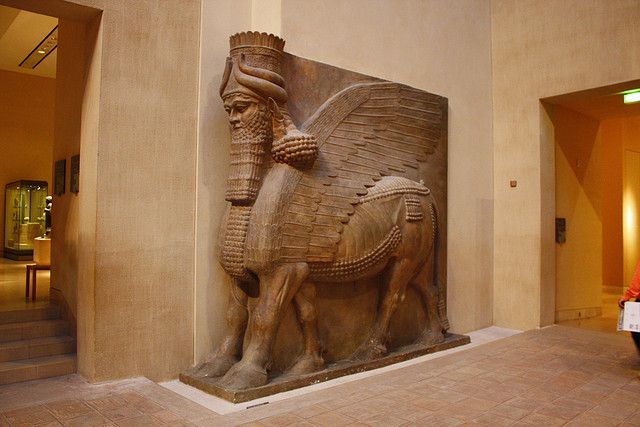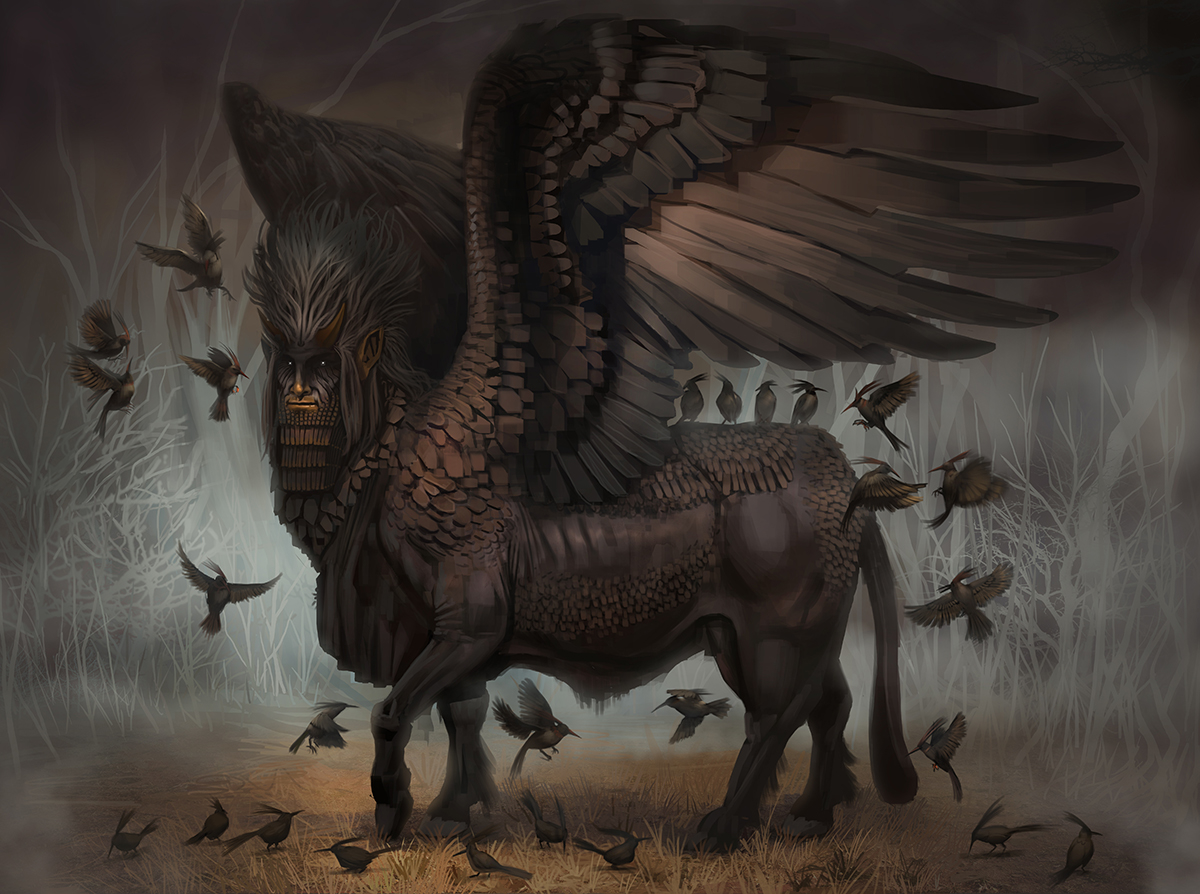
Lamassu are human-headed, eagle-winged, bulls or lions that once protected cities in Mesopotamia. They were believed to be very powerful creatures, and served both as a clear reminder of the king’s ultimate authority and as symbols of protection for all people.

The sculptures were meant to be seen in one of two ways. From the front looking directly at the face, or from the side as the viewer entered the king’s throne room. Therefore the figures are sculpted with five legs – two legs that can be seen from the front view and four legs that can be seen from the side. This would indicate that the figure was a four-legged beast, but the extra leg was added so that the side view made visual sense.

The Lamassu/Shedu composition is powerfully evocative of strength (body of lion / bull), speed (an eagle's wings) and intelligence (human head).
• The bull demonstrates strength - in Assyrian times the wild bulls of Mesopotamia were huge beasts, up to 183cm at the shoulder, and were hunted by the kings.
• The eagle, being the most powerful bird in the sky, symbolises the king's power as he looks over those he rules
• The crowned human head represents intelligence, with the face of the Lamassu carved to represent the king who ruled at the time the sculpture was created.

Every important city wanted to have Lamassu protect the gateway to their citadel. Additionally, they were the guardians who inspired armies to protect their cities. The Mesopotamians believed that Lamassu frightened away the forces of chaos and brought peace to their homes. Lamassu in the Akkadian language means “protective spirits.”

Lamassu were protectors of not only kings and palaces, but of every single human being. People felt safer knowing that their spirits were close, so Lamassu were engraved on clay tablets, which were then buried under the threshold of a house. A house with a Lamassu was believed to be a much happier place than one without the mythical creature nearby. Archaeological research shows that it is likely that Lamassu were important for all the cultures which lived in the land of Mesopotamia and around it.

After the Assyrians, the Achaemenid Empire of Persia also widely embraced this figure. This mythological creatures were called "gopathas" in Persian.

Zoroastrains, to this day exhibit & revere these paired images of winged bulls, their Holy Gopatshah guarding the entrance to their fire temples. The Gopatha outside the fire temple not only stands as a symbolic guardian against all forces of evil, but, also as a reminder to every devotee who enters the house of worship, to acquire physical and spiritual strength, aim high and look afar & live life intelligently with wisdom.
source Credit:
http://arthistoryblogger.blogspot.com/2012_02_01_archive.html?view=sidebar
Source 1
Source 2
Source 3
Source 4
Plagiarism is the copying & pasting of others work without giving credit to the original author or artist. Plagiarized posts are considered fraud and violate the intellectual property rights of the original creator.
Fraud is discouraged by the community and may result in the account being Blacklisted.
If you believe this comment is in error, please contact us in #appeals in Discord.
the source credit has been given. it was an upload error
!hw ban
Plagiarism
Banned @crazysailor.
Warning! This user is on our black list, likely as a known plagiarist, spammer or ID thief. Please be cautious with this post!
If you believe this is an error, please chat with us in the #appeals channel in our discord.
the source credit has been given. it was an upload error